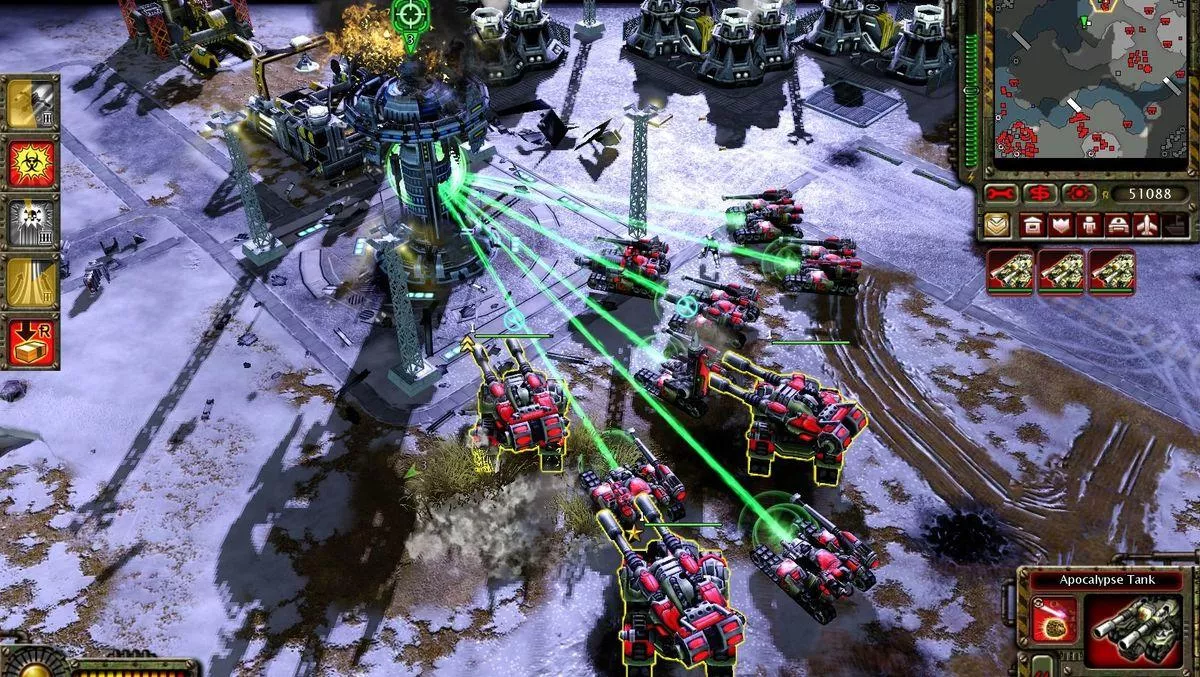
Imagine a world where Hitler never existed. Welcome to the alternate universe of Red Alert 3. Lose one dictator, gain another. Without the advent of Nazi Germany, Stalin invades Europe, forcing the rest of the world to band together as one allied force to face him. The first Red Alert game - now over a decade old but still highly regarded - depicted this conflict and was originally envisioned as a prequel to the Command and Conquer series.
In Red Alert 2 Russia rose again under a new dictator using mind control, only to be beaten, again. The storyline of Red Alert 3 continues from this point, showing a defeated Russia. A Russian general (played by Tim Curry) uses a time machine developed by one of the Soviets' leading scientists (Peter Stormare) to go back and eliminate Albert Einstein, robbing the allies of his scientific genius and creating a new history where Russia dominates Europe. However, this encourages the Japanese empire to invade from the east, throwing the world into a three-way war.
Apart from improved graphics (best seen in the impressive water effects that accompany the game's heavy naval slant), the chief improvements in this sequel are gameplay related. Whereas in the past the only differences between the three factions were fighting units and buildings, now each race has a unique building ethic and upgrade tree. For example, the Empire of the Rising Sun builds mobile units that deploy into buildings via their special ability, allowing them to construct a base remotely without penalty. Furthermore, a faction's units are divided equally between naval and land forces, with many being able to move seamlessly between both environments.
Cooperative play has also been enhanced. You're constantly asked whether you have an ally you would like to play with. If not, a computer-controlled ally is provided for you. During combat these allies can be given general orders, such as ‘attack here' or ‘hold this position'. Occasionally your ally can be given special map-specific commands to help achieve your objectives. This addition of cooperative play in campaigns is such a simple improvement, yet something which is rarely seen in this gaming genre, and it sets Red Alert 3 apart from the rest.
The campaign storylines are as outrageous as always. Although the plots in Command and Conquer are over the top, they look mild and serious when compared to those in Red Alert. The three campaigns are independent, and the storylines are not connected. In each campaign the faction you play eventually conquers the world. Given that the campaigns are nine missions long, this single-plot-per-campaign gameplay makes the game seem shorter than it is, which is unfortunate. In Red Alert 2 there were only two campaigns, but each was longer, offsetting this problem.
In Command and Conquer 3 the campaigns were each a facet of a larger story. Having made that criticism, each campaign in RA3 is fun, even if the story seems rather clichéd and resembles every C-C campaign since the original was released a decade ago. It is certainly good to see the acting has been significantly improved, especially after C-C3, where certain actors seemed frigid, like they were just going through the motions.
Red Alert 3 is not such an epic as Command and Conquer 3, which featured a story from two perspectives and was therefore more in-depth. The female characters were also more believable and not just eye candy for the masses. Red Alert 3 is more of a continuation of the series rather than a decisive new chapter. So, while seemingly short and perhaps limited in replay value and storyline, Red Alert 3 is a worthy addition to the series.